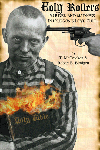This page is under construction, but here's a start.
Throughout history there have been those who have been regarded as especially inspired, those who have held out the promise of a better world to others--those such as Jesus, Mohammed, Buddha, and Confucius. They profoundly influenced the lives of others while they lived and long after they died. Franz Edmund Creffield thought he was another such man, and so did his flock.
Great religious leaders show deep concern for their disciples' development. They guide their disciples in examining their own lives. They teach by example, and foster a climate in which their disciples can decide how best to conduct their lives--permitting them to come to their own conclusions. Creffield did none of this. Creffield was not a great religious leader, but a cult leader.
Cults have always been with us and will always be with us. In the United States today there are an estimated 1,000 harmful cults with an estimated combined membership of one-million people. Not all cults are bad or harmful, though. Cults are first-generation religions. Most cults do not last long after their leader dies. If they survive after their leader dies, the cult may eventually be accepted by society as a legitimate religion.
Christianity, Judaism, and Islam all grew out of tightly knit communities of believers with leaders who said their doctrines or teachings came directly from God. Many of the early practices of these faiths seemed shocking to those who didn't share them, and adherents of these religions were often persecuted. Time and acceptance are necessary for a cult to be considered a legitimate religious group. Creffield's church, the Church of the Bride of Christ, did not stand the test of time.
Creffield probably never intended to destroy lives. It is possible he started out with the best of intentions and meant only the best for his flock. It is possible that he believed what he said, and was truly baffled how others could believe he was evil. It is possible he really thought he had God-like powers, or even was God. It is possible he said to himself: "A man fired a gun at me five times, and the gun clicked harmlessly! I said the world was coming to the end, and San Francisco was destroyed!--obviously I am God." God will be the one to pass final judgment on Franz Edmund Creffield.
How do you tell if a group is a harmless fringe group or a dangerous cult? According to Margaret Thaler Singer, a cult expert and author of Cults in Our Midst, dangerous cults have most of these ten characteristics:
- 1. A leader who claims divinity or special relationship with God.
- 2. A leader who is the sole judge of a member's actions or faith.
- 3. A totalitarian governance.
- 4. Totalistic control over the member's daily lives.
- 5. Exclusivity and isolation.
- 6. Development of deep emotional dependence.
- 7. Prohibition of critical analysis and independent thinking.
- 8. Utilization of methods of ego destruction and mind control.
- 9. Exploitation of a member's finances.
- 10. Underemployment and exploitative working conditions.
Information about Brainwashing & Thought Reform
Lifton's eight 'psychological themes' that can be found in totalist groups like the Holy Rollers:
***
Stanley Milgram's Obedience to Authority
***
Think You Can't be Lured into a Cult? Think Again.
The Oregon State Insane Asylum in 1907
***
Relevant Newspaper Articles:
October to December 1903: Holy Rollers Burn Furniture & Pets
April to June 1904: Holy Rollers are Committed to the Asylum
Chapters from
Holy Rollers: Murder & Madness in Oregon's Love Cult
Part 1: The Seduction
Chapter 1: Trust Me, Brothers And Sisters
(Life Before Creffield [B.C.])
Chapter 2: God, Save Us From Compromising Preachers
(Creffield's Preachings)
Chapter 3: The Flock
(Profiles of the Holy Rollers Were)
Chapter 4: The Holy Rollers
(Things Start to Get Wild on on Kiger Island)
Chapter 5: Housecleaning
(There's a Sacrificial Bonfire)
Chapter 6: Community Concerns
(Officers Visit)
Chapter 7: Esther, The Chosen One
(Creffield Plans to Marry 16-Year- Old)
Chapter 8: Tar and Feathers
(The Men of Corvallis Act)
Chapter 9: Sane People Don’t Go Bareheaded
(Holy Rollers are Committed to the Asylum)
Chapter 10: More Beast Than Man
( Creffield is Arrested)
Chapter 11: God Will Plead Creffield's Case
(Creffield in Court)
Chapter 12: Scandal
(Shocking Testimony at the Trial)
Chapter 13: Calm Before the Storm
(The Holy Rollers Resume their Lives)
Chapter 14: Giving Up The Ghost
(Men are Gunning for Creffield)
Part Two: The People V. Creffield
Chapter 16: The Widow Creffield
Chapter 19: An Inherited Streak of Insanity
Part Three: The Madness
Chapter 23: Seeking Reconciliation
Chapter 24: Another Holy Roller Page One Murder
Chapter 25: What Can Papa Do For You?
Chapter 26: Human Life is Too Cheap In This Community
Chapter 30: The Final Chapter
(What Happened to Everyone Afterwards)
The Epilogue
(Heaven's Gate)
